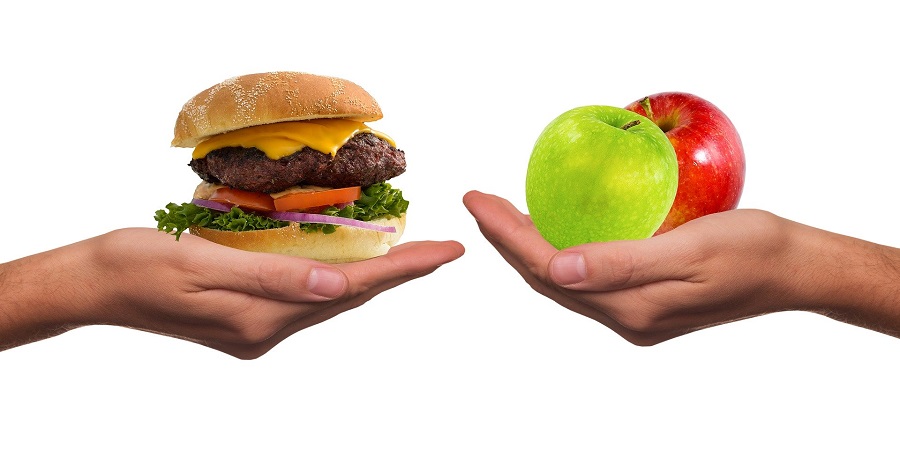
Labelling food and drink with the amount and type of exercise needed to burn off its calorie content may be a more effective way of encouraging people to make ‘healthier’ dietary choices, shows research carried out in collaboration with the University of Birmingham.
Given that the current system of food labelling by calorie and nutrient content is poorly understood, and there’s little evidence that it is altering purchasing decisions or having any impact on obesity levels, it may be worth trying, suggest the researchers following a study published in the Journal of Epidemiology & Community Health.
If widely applied, it might, on average, shave off up to 195 calories per person per day, calculated the researchers from the Universities of Loughborough, Birmingham and East Anglia, and Birmingham Community Healthcare NHS Foundation Trust.
Physical activity calorie equivalent or expenditure (PACE) food labelling aims to show how many minutes or miles of physical activity are needed to burn off the calories in a particular food or drink.
For example, eating 229 calories in a small bar of milk chocolate would require about 42 minutes of walking or 22 minutes of running to burn these off.
The UK Royal Society for Public Health has already called for PACE labelling to replace the current system, but to date, there’s been little strong evidence to back this stance.
The researchers trawled research databases and other relevant online resources for studies that compared PACE labelling with other types of food labelling or none for potential impact on the selection, purchase, or consumption of food and drinks (excluding alcohol).
They found 15 relevant randomised controlled trials, and pooled the data from 14 of them. The results showed that when PACE labelling was displayed on food and drink items and on menus, on average, significantly fewer calories - 65 fewer per meal - were selected.
PACE labelling was also associated with the consumption of 80 to 100 fewer calories than no food labelling, or other types of labelling.
Based on their findings, and average consumption of three meals a day plus two snacks, the researchers suggest that PACE labelling might potentially slice around 200 calories off daily intake.
But they caution, the number of included studies was small, and the design of each varied considerably. Most weren’t carried out in real life settings, such as restaurants and supermarkets.
Dr Helen Parretti, who was involved in the research while working at the University of Birmingham and is now at the University of East Anglia, said: “PACE labelling shows some promise in reducing the number of calories selected from menus, as well as the number of calories and the amount of food consumed.”
The evidence shows that even a relatively small reduction in daily calorie intake (100) combined with a sustained increase in physical activity is likely to be good for health and could help curb obesity at the population level: PACE labelling may help people achieve this, say the research authors including Sue Bayliss and April Coombe of the University of Birmingham's Institute of Applied Health Research.
“PACE labelling is a simple strategy that could be easily included on food/beverage packaging by manufacturers, on shelving price labels in supermarkets, and/or in menus in restaurants/fast-food outlets,” the authors add.
“Public health agencies may want to consider the possibility of including policies to promote [it] as a strategy that contributes to the prevention and treatment of obesity and related diseases,” they conclude.
- Journalists can request interviews via Emma McKinney, Media Relations & Communications Manager in the University of Birmingham Press Office, +44 0121 414 6681.
- The University of Birmingham is ranked amongst the world’s top 100 institutions. Its work brings people from across the world to Birmingham, including researchers, teachers and more than 6,500 international students from over 150 countries.
- Daley et al (2019). ‘Effects of physical activity calorie equivalent food labelling to reduce food selection and consumption: systematic review and meta-analysis of randomised controlled studies’. Journal of Epidemiology & Community Health. DOI: 10.1136/jech-2019-213216.
- The authors of this research were:
- Professor Amanda Daley, of the University of Loughborough
- Eleanor McGee, of Birmingham Community Healthcare NHS Foundation Trust
- Mrs Sue Bayliss, of the University of Birmingham's Institute of Applied Health Research
- Mrs April Coombe, of the University of Birmingham's Institute of Applied Health Research
- Dr Helen Parretti, who carried out this research while working at the University of Birmingham and is now at the University of East Anglia
- Birmingham Community Healthcare NHS Foundation Trust, Birmingham, UK 3Institute for Applied Health Research, University of Birmingham, Birmingham, UK 4Norwich Medical School, University of East Anglia, Norwich, UK
- The Journal of Epidemiology & Community Health is one of more than 70 specialist journals published by BMJ. The title is the official journal of the Society for Social Medicine.